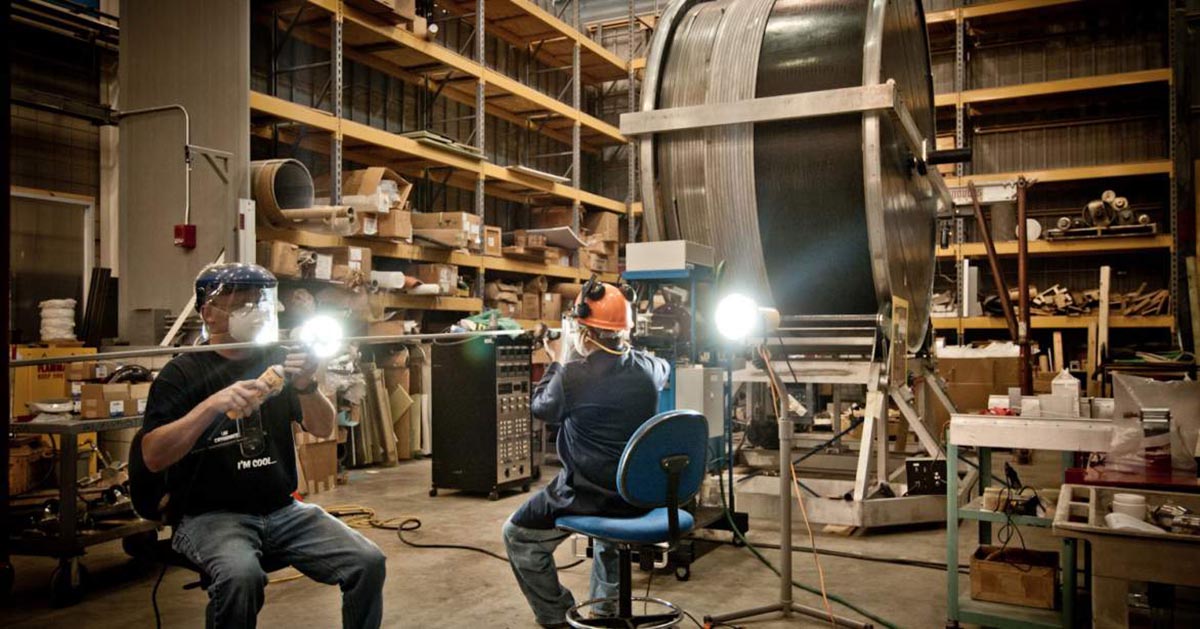
This high-tech spool is one big bobbin.
The Magnet Lab's magnet-building team has a way of customizing even the most straightforward tools of its trade. Take this "cable-in-conduit conductor" spool.
When superconducting cable-in-conduit is made, the cable itself is squished into a rectangular shape using a torturous-looking device called a tube mill.
The cable is formed into this shape in one long, continuous section, which presents some logistical problems; namely, what one does with more than a thousand unbroken yards of metal? The answer: you wind it, very carefully, onto this giant spool in the same way you'd take up thread into a sewing machine.
The spool has to be supersized because winding it around anything smaller could put unwanted stress on the metal. Winding the cable is a time-consuming process, with about four feet of cable completed per minute. Though commercial versions of this machine can go as fast as 1000 feet per minute, the lab's span of cable-in-conduit may represent as much as a million dollars' worth of materials, so technicians use extreme care.
What don't you expect from a structure this size? It floats. Air pads on the bottom of the spool help technicians to move the loaded-up piece of equipment from one area of the workspace to another. This is also handy for making minute adjustments during the coil take-up process.
The spool will be used for the eventual replacement of the 45-tesla hybrid "A" coil.
By Amy Mast
Cable-in-conduit conductor is used to make the superconducting part of hybrid magnets, which are part resistive magnet (made of copper plates), part superconducting magnet. CICC, as it's called, is made of superconducting wires. Unlike copper, superconductors conduct electricity with no resistance, or friction. That means once current is flowing, it flows unimpeded as long as the cable is cooled to very low temperatures.
Last modified on 02 December 2022